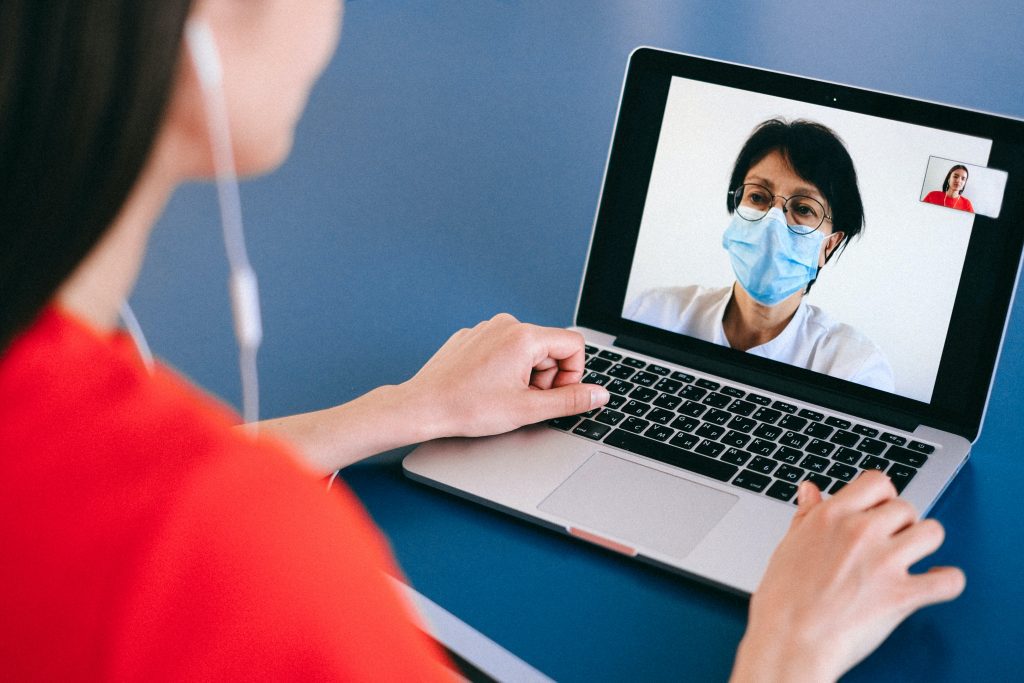Why Being Better Tele-Practitioners is Vital
Before COVID-19 dramatically altered our way of life, telehealth or telemedicine was gaining acceptance and adoption. According to the American Medical Association (AMA) research, tele-visit usage doubled from 14 to 28 percent between 2016 and 2019. Despite this growth, many patients and healthcare practitioners (HCPs) clung to the belief that in-person visits, even for routine care, were preferential and that telemedicine was not the priority.
The pandemic has changed so much, including our collective views on telehealth. While it is not ideal for all medical conditions, its acceptance is widely recognized as a prudent alternative designed to keep patients and healthcare providers connected and safe. According to a presentation that Kaiser Permanente gave on a CDC webinar in December of 2020, “We’ve seen the most dramatic increase has been our video visits platform. There’s been an exponential growth of almost 4000% compared to what we did in 2019. Video care is something we always thought would be used more in the future, but COVID brought the future rapidly to the present.”
A 4,000 percent increase speaks volumes to the importance of this care option and warrants deeper examination as to how physician/HCP communications and thus that patient experience can be improved when utilizing telehealth tools and technologies. Here are three tips for healthcare providers in their quest to improve telemedicine outcomes and patient communications and engagement:
1: Understand Each Patient’s Comfort Zone
Patients have varying comfort levels with technology and absorb health-related information at different paces. Therefore, it’s important to identify barriers and preexisting preferences and biases.
It is imperative for HCPs and their staff to quickly evaluate a patient’s perspective and adapt in order to generate higher levels of openness, communication, and engagement. Case in point, if a patient does not know how to turn their camera or mic on and off, that can cause frustration that can be taken out on a physician or her staff. Due to no fault of the practice, the individual may finish the appointment feeling unfulfilled, not heard, even depressed.
Empathy is key in helping people feel comfortable, particularly older patients, in a digital communications environment.
2: Focus on Demonstrating Compassion
Body language is just as important when performing a telemedicine consultation as it is when seeing a patient in person, maybe even more so. In an office setting, there are many distractions, such as nursing and other support staff, vitals being checked, tests performed, and other visual stimuli. During a video consultation, it’s two individuals and their screens, so it’s quite clear when an HCP is not focused solely on the patient. In order to make patients feel comfortable, ask lots of questions, ensure your body language shows you’re listening, and remain keenly interested in their responses. Eye contact is critical in a telehealth setting. If you’re not focused on the person and their well-being, it will come across.
3: Make Sure Your Technology and Their’s Works
It is extremely helpful to address obstacles prior to each appointment. If the patient is technologically challenged, a staff member can offer assistance to ensure they’re up and running – with microphone and camera capabilities – 15 minutes before telehealth sessions. This is especially important with new patients, as medical practices cannot know a person’s limitations as it relates to hardware, internet connectivity, or personal ability to operate their device until it’s often too late. Through some health systems’ patient portals, such as NYU Langone, a person can test their hardware prior to the appointment. This automated tool is an investment, but if you’re scheduling lots of telehealth appointments, in the long run, it will save time and money while taking the burden off your staff.
While there’s a cost to performing advanced troubleshooting steps, it can promote much higher patient satisfaction and CAHPS scores. Moreover, your physicians will receive higher review scores online on such sites as Google Places, Zocdoc, Healthgrades, and Vitals.
The Future is Now
Due to the impressive growth in telemedicine visits over the past few years, and with the pandemic creating widespread telehealth trials and visits, this tool is here to stay for particular types of care. It is a timely practice, which can not only help patients but bring earned media coverage to medical practices and med-tech companies that continue to innovate.
Designing the right way to position your practice or company as a telemedicine and telehealth leader can set you apart and have a tremendous impact.
Rosica Communications supports med-tech clients in their quest to manage perception, build thought leadership, and improve patient outcomes.
Is your medical practice or healthcare company experiencing growth in telemedicine? Learn how to leverage this momentum here.

